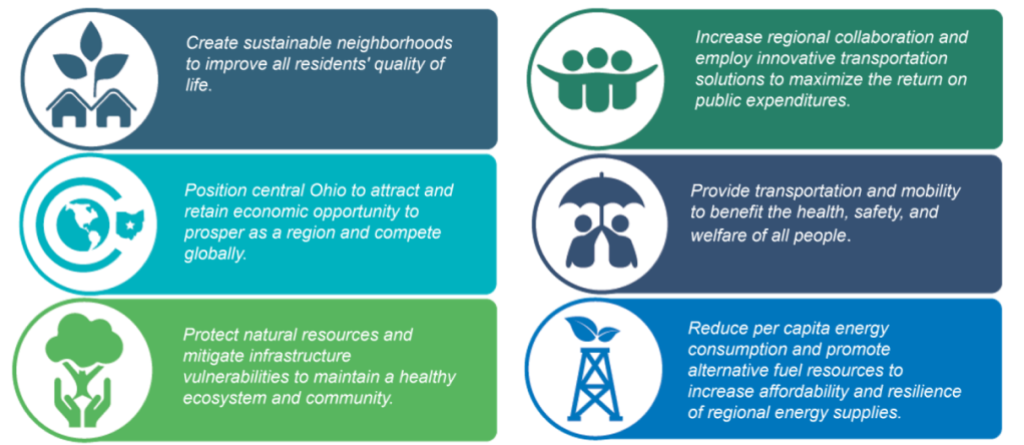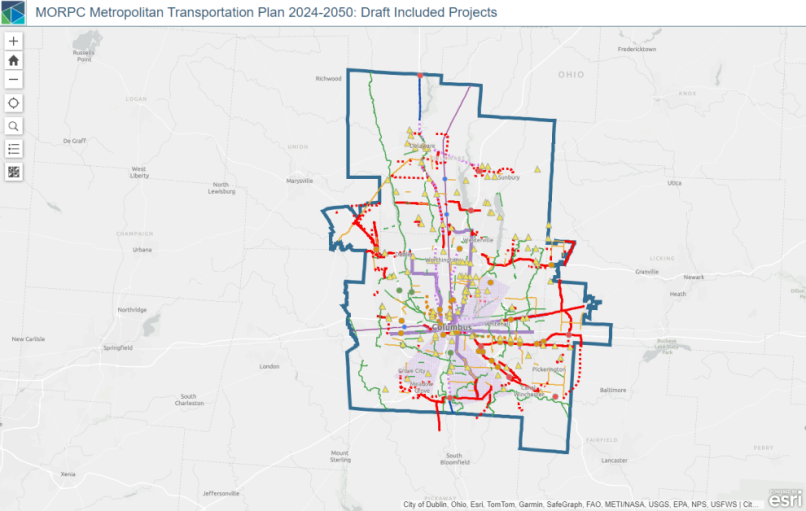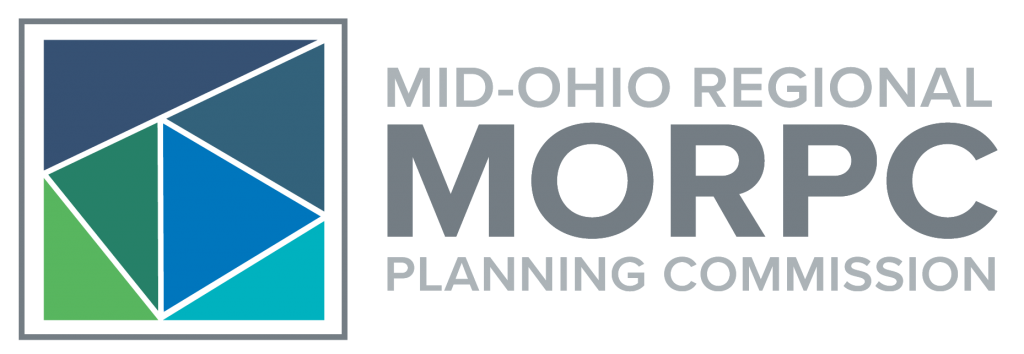In May 2024, MORPC adopted the 2024-2050 Metropolitan Transportation Plan for the Columbus Urbanized Area. The Metropolitan Transportation Plan (MTP) is a long-range planning document that identifies transportation priorities, strategies, and projects over the next two decades. It is updated on a 4-year cycle. MORPC coordinates the development of the MTP with communities throughout Central Ohio and with other local, state, and federal agencies. The MTP makes the greater Columbus region eligible to receive a large amount of federal transportation funding to improve, maintain, and operate public transit, highways, bikeways, sidewalks, and related facilities. Transportation projects must be included in the MTP to be eligible to receive federal funding.
In November 2022, MORPC adopted the goals for the 2024-2050 Transportation plan (resolution T-15-22). These goals (listed below) are intended to be broad vision statements that guide the development of strategies, project evaluation, and programming in the MTP.

In January 2023, building on the previously adopted goals, the Objectives and Performance Measures for the plan were adopted. Each Objective has several performance measures to track progress toward the related goal. The performance measures include those required by the US Department of Transportation (USDOT) and additional measures developed by MORPC to track the region’s progress. The Objectives and Performance measures listed here were adopted by MORPC’s committees in January 2023 (resolution T-1-23).
In the first quarter of 2023, MORPC developed the Population and Employment Forecasts that would inform the MTP. These forecasts looked out over the 2024-2050 MTP planning horizon and distributed the expected population and job growth across the region. In summary, the region is expected to grow significantly in the coming decades, growing from the current 2.4 million residents to a projected population of 3.1 million across the 15-county central Ohio region. Jobs are also expected to grow 28% from 1.3 million to 1.6 million. More detailed information from this forecast is available here:
MPO area TAZ projections
MORPC then distributed the 2024-2050 projected population and jobs data into Traffic Analysis Zones (TAZ), a smaller geography that is used to model land use for traffic studies. The projections in these zones were adopted by MORPC’s committees in November of 2023 (T-15-23) The TAZ geographic data is available on the Mid-Ohio Open Data site.
Regional Strategies
In order to advance the goals and improve the performance measures, the MTP identifies strategies. These are intended to be action items to be fulfilled by MORPC and other regional and local planning partners. Strategies are referenced throughout the MTP document and listed in summary in chapter 8.
Specific MTP Projects
In the summer of 2023, MORPC engaged the public to assist in the development of the list of candidate projects for inclusion in the MTP. A webmap was published that included projects collected from a variety of local government plans, and comments were solicited on these projects and public suggestions drawn on the map. When the project suggestion period ended in September 2023, 174 projects were drawn by the public and 1,052 comments were made on projects.
After the list of candidate projects was developed, MORPC processed the data necessary to develop project scores using project evaluation criteria. All candidate projects, including those suggested by the public, were scored for each of the 6 goals. Using the results of this process and the collected public feedback, a list of draft included projects was developed. The MTP strategies were also developed and released for comment with the project list.
2024-2050 Included Projects Webmap
An interactive map is available showing the included projects in the fiscally constrained 2024-2050 MTP. Project popups provide project details, estimated costs, and proposed project construction year.
The below chapter PDFs and Appendices are the adopted MTP document:
MTP Chapters
Chapter 1 – Plan Purpose & Development
Chapter 2 – Regional Trends
Chapter 3 – The Transportation System
Chapter 4 – System Management
Chapter 5 – Demand Management
Chapter 6 – System Development
Chapter 7 – Project Evaluation & Fiscal Constraint
Chapter 8 – Summary of Strategies & Projects
Chapter 9 – Plan Implementation & Monitoring
Appendix A – Future Land Use
Appendix B – Air Quality Conformity
Appendix C – Environmental Justice Technical Analysis
Appendix D – Environmental Mitigation


